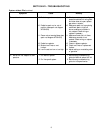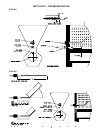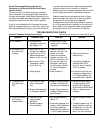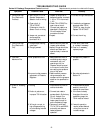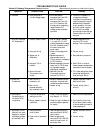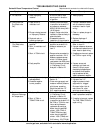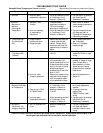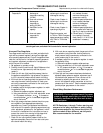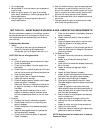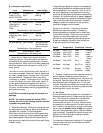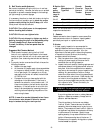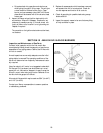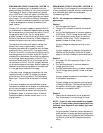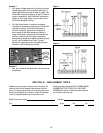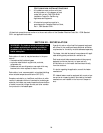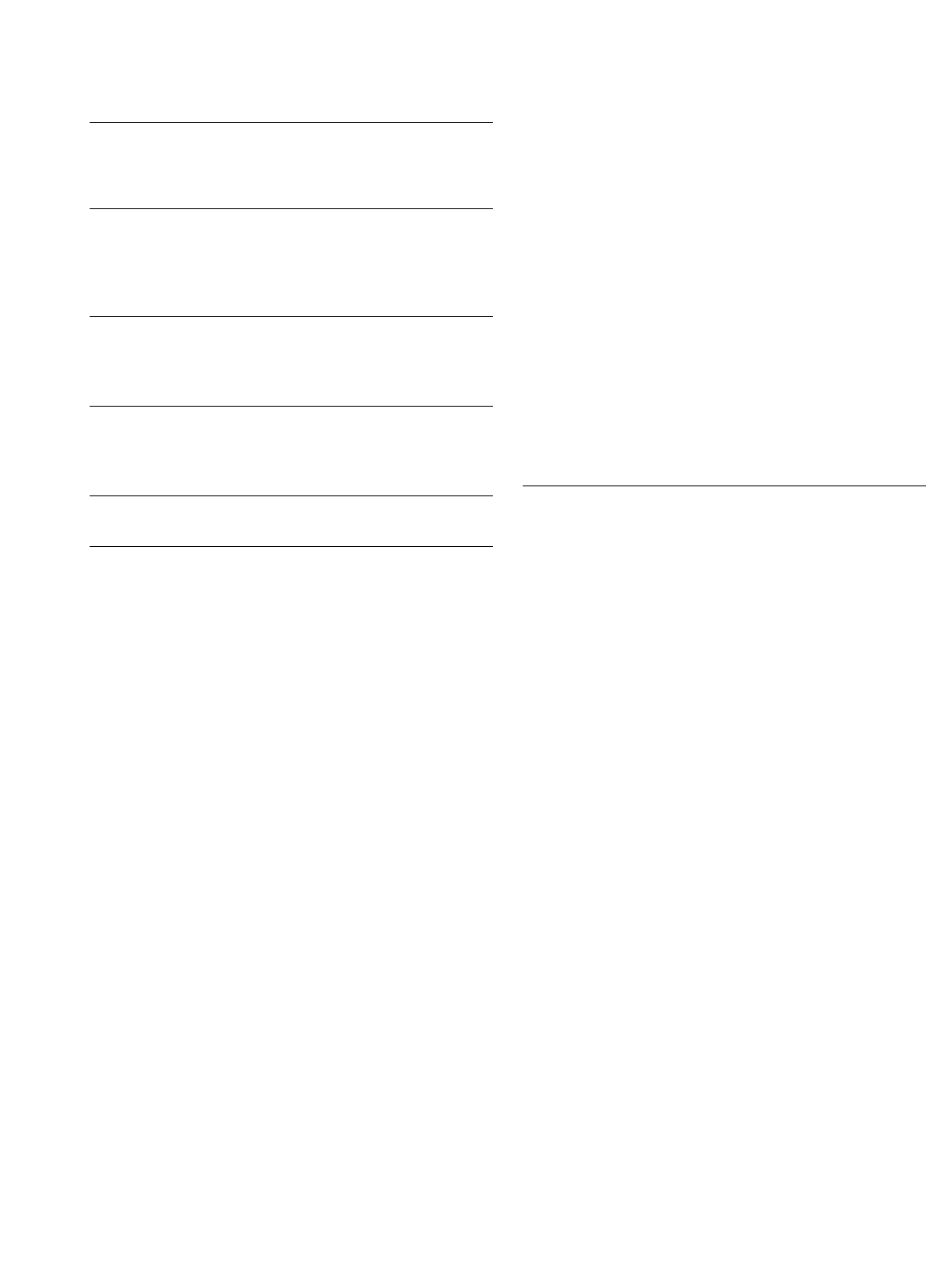
18
B. Lubrication Instructions
Item Manufacturer Bearing Type
A slight showing of grease at the seals with accompanying
normal bearing temperature indicates proper lubrication.
Normal temperature can range from “cool” to “hot to
the touch” depending on size, speed and surrounding
conditions. Excessive bearing temperature indicates faulty
lubrication. An insufficient amount of grease is suggested
by a bearing showing no grease at the seals, and a higher
than normal temperature and noise level. Excessive
leakage of grease at the seals, and a high operating
temperature suggest too much grease.
Frequency of Lubrication - Frequency of lubrication
depends upon operating conditions. The bearing
operating temperature is the best index for determining
a relubrication schedule. The following chart gives the
frequency of relubrication based upon continuous
operation for various operating temperatures and can
be used as a satisfactory guide for determining when
all ball bearings should be relubricated.
All 3 phase fan
motors (1 HP to
20 HP) ODP,TEFC
U.S., Baldor or
equal
Single row ball
bearings
Recommendation: See following note.
All 1 phase motors
(Fractional HP)
ODP,TEFC or
TEAO
Century, G.E. or
equal
Bronze sleeve
bearings
Fractional HP
single phase, ODP
or TEFC
Century, G.E. or
equal
Bronze sleeve
bearings
Fan shaft bearings
Fafnir or equal Self-aligning single
row ball bearings,
resilient mounted
Dampers
Arrow or equal Sleeve
Recommendation: See following note.
Recommendation: See following note.
Recommendation: See following note.
Recommendation: See following note.
1. Blower Motors - Some motors require lubrication
while others do not. Those that require lubrication can
be identified by the presence of grease plugs in the motor
casing at each end. Motors that do not have grease plugs
cannot be greased and are lubricated for the life of the
motor bearing.
Lubrication of motors should be done while the motor is
warm and at a standstill. Remove and clean all grease plugs
and insert a grease fitting in the upper hole in the motor
casing at each end. (Viewed as if motor were sitting
horizontally on its base.) There may be one or two plugs
in each end casing of the motor. Add a small amount of
a clean, good grade ball bearing grease, such as Exxon
Polyrex EM or equal, with a low pressure grease gun. Run
the motor five minutes before removing the grease fittings
and replacing the plugs.
CAUTION: An excess of grease will overheat the
bearings.
NOTE: On totally enclosed fan cooled (TEFC)
motors, the rear end fan housing must be removed
to expose the grease plugs.
2. Pillow Block Bearings - Pillow block bearings are used
on supply blower(s) as required. Bearings have been pre-
lubricated with a number 2 lithium base grease.
Relubrication should be done with a similar grease using
a low pressure grease gun. Wipe all grease fittings clean
before adding grease. Grease should be added slowly, in
small amounts at frequent intervals while the shaft is being
manually rotated.
500 RPM
1000 RPM
1500 RPM
Any Speed
Any Speed
Any Speed
Any Speed
Up to 150°F
Up to 210°F
Over 150°F
Up to 150°F
Over 150°F
Any Temp.
Any Temp
Clean
Clean
Clean
Dirty
Dirty
Ver y Dirty
Extreme
Conditions
2 months
2 weeks
weekly
1 week to
1 month
daily to
weekly
daily to
weekly
daily to
weekly
Speed Temperature Cleanliness Interval
3. Dampers - Dampers should be inspected monthly for
securely fastened linkages and smooth operation. If
dampers are binding or excessively noisy, lubrication may
be required. Place one drop of #20 wt. machine oil on
each blade bearing and linkage ball joint. Do not over
lubricate. Wipe away any excess from the area. Be sure
to note that dampers over 49 inches long have intermedi-
ate bearings which require lubrication.
C. Air Filters
All filter banks should be equipped with a manometer or
differential pressure switch to indicate when the filters are
dirty. Filters should be replaced when the differential
pressure across them reaches the manufacturer’s
recommended final value. Dirty filter elements should
be replaced with a clean element of the same type and
size. In addition, the manufacturer strongly recommends,
that air filters be checked every 30 days and replaced
with new filters (throw-away type) or cleaned (washable
type) as required. Cleanable filters should be given new
application of filter coating after washing to maintain
optimum filter performance.
The frequency of cleaning and replacing air filters applies
twelve months of the year where blowers are used for
ventilation and heating.



